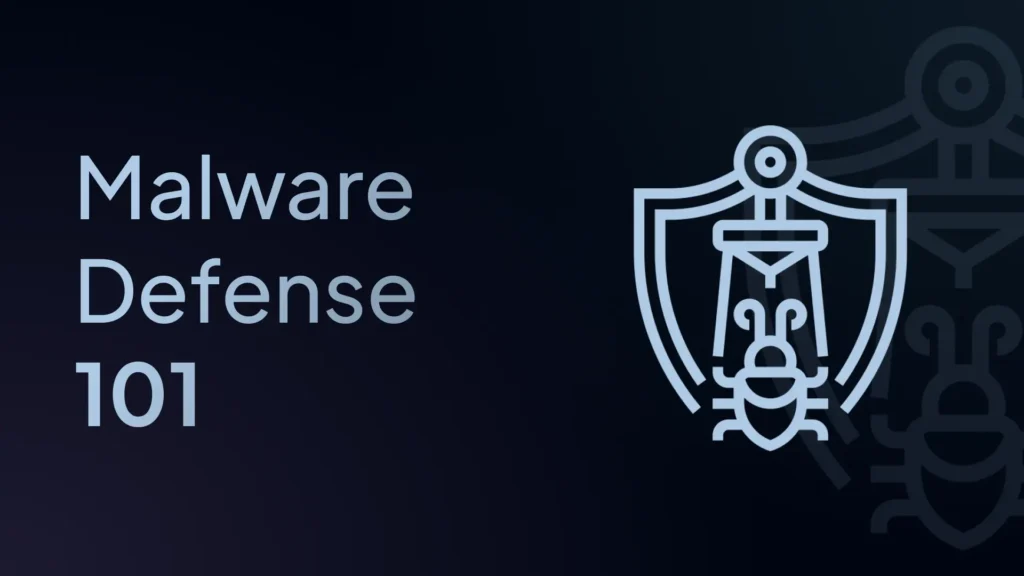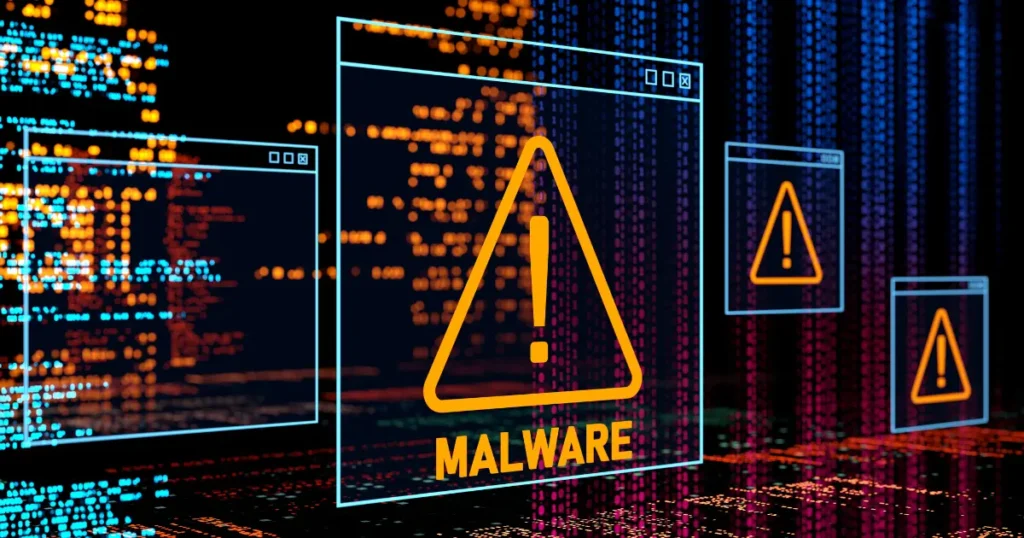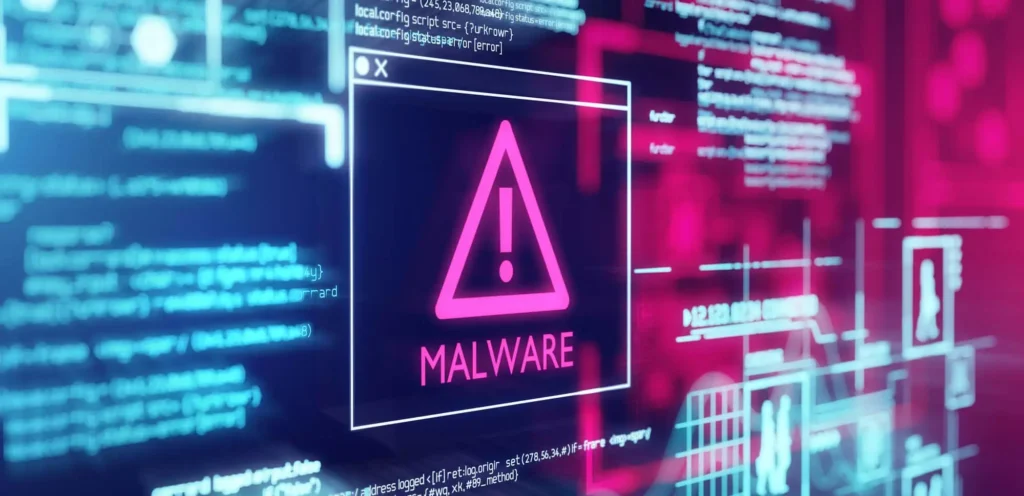The more companies and their ecosystems are digitally connected, the higher, more frequent, and more sophisticated the cyber threats attacking them become. To put this into context, how about the fact that over 87% of global companies have faced an AI-powered cyber attack in 2024 alone? Traditionally, malware defenses relied on quite a few manual and reactive processes. But thanks to AI and increased adoption of cloud services, there are newer and better ways of dealing with malware, even before it attacks your cybersecurity. In this article, we will understand what a proactive malware defense means and how you can integrate AI into your security workflow to help your SaaS business establish a proactive approach towards malware.
What Does Proactive Malware Defense Entail?

Let’s start with understanding what is malware and why you need to have a defense mechanism against it.
Malware refers to a software or program that, when installed on your system, can unleash a wide range of threats such as viruses, trojan horses, ransomware, and worms, sometimes corrupting the entire network.
For the longest time, companies, IT, and otherwise took a fairly reactive approach towards their cybersecurity. However, this is no longer viable in the evolving cyberthreat landscape today.
To ensure that your company can protect critical assets and systems, you must prevent cyber attacks and threats in advance with a proactive approach towards managing malware and vulnerabilities.
Creating a proactive strategy towards security includes —
- Continuous Monitoring: Establish automated mechanisms that track suspicious activity or patterns to raise alarms in advance and help you prevent potential attacks.
- Predictive Analytics: Collect and analyze historical data to generate insights about the events preceding and leading to attacks and threats, and make informed decisions to prevent such situations in the future.
- Automated Responses to Suspicious Activity: A proactive response has to be instant and promptly targeted at suspicious activities that might lead to security issues.
While your malware defense and response strategy can include several more steps, the aspects above are critical to getting the basics right. For SaaS businesses, leveraging analytics tools and intelligence to reduce the window of vulnerability is important, considering their digital-first nature and exposure to external threats.
If you already use tools to generate content, manage processes, or even humanize AI content, you know how useful the technology can be in reducing manual efforts and errors. AI can help you automate most parts of your security strategy and lead to a faster and more efficient security posture, and is a preferred technology when you want to manage your cyberthreats effectively.
Key Steps to Integrate AI Into Your Security Workflow
We have now discussed what proactive malware defense looks like. Let’s look at how you can leverage and integrate AI into your security workflow, so that you can start transforming your security strategies to be more proactive.
#1 Assess Your Current Security Strategy and Infrastructure
Before you change and optimize your current SaaS security strategy and workflow, you have to begin by assessing its strengths and weaknesses. Evaluate your security tools, workflows, and processes to identify gaps and potential areas where AI and automation could bring a lot of improvement.
Doing so will help you identify vulnerabilities in your processes and help integrate AI seamlessly into your strategy so that you can address the most important ones first. You’d want to look out for the most SaaS-specific risks, such as API vulnerabilities and multi-cloud risks.
#2 Consider the Right AI Tools and Solutions for Your Requirements
When choosing the right AI tools and software solutions for your requirements, prefer those that are specifically tailored to perform in SaaS environments. Some of the features you must prioritize in the process include real-time analytics, automated remediation, adaptive Identity and Access Management (IAM), seamless integration with the rest of your SaaS tech stack, and support for advanced capabilities like a document ai api.
Ensure to choose tools that utilize centralized dashboards and empower you to handle multi-cloud and hybrid deployments.
#3 Collect and Prepare Relevant Data
The better the accuracy, relevance, and quality of your database, the more robust the AI models driving your security workflows. Aggregate logs and collect data related to API calls, user activity, and system events across your SaaS applications and platforms. Utilize every customer touchpoint and the entirety of your cloud environment to collect highly useful and relevant data.
When used properly, this data can help you train your AI models effectively, however, this data should be collected securely and labelled accurately. You must also ensure that these datasets are regularly updated as they form the foundation for AI models that can help you recognize and handle known and emerging threats.
#4 Automate Repetitive Tasks
There are several repetitive tasks that may seem uncritical, but contribute significantly to your security strategy. These tasks that can be easily automated using AI include alert triages, log analysis, and even incident response.
In SaaS businesses, AI can be used to automate activities such as isolating compromised accounts during a cyberattack, detecting suspicious API activity, and even enforcing dynamic access controls without any manual intervention. Utilizing automation the right way can help you neutralize threats quickly and reduce the window of vulnerabilities and exposure.
#5 Constantly Monitor & Improve Your Updated Workflow
Establish strong feedback loops that will help you train your AI model to continuously learn from new security incidents and be capable of adapting to the evolving threat landscape of the SaaS industry. Implementing AI-powered continuous monitoring will help you detect anomalies and potential breaches in real time.
Retrain your AI models regularly with updated and relevant datasets so that you can accurately detect and minimize false positives. More than that, you must constantly monitor AI-powered and updated security workflows and make necessary improvements.
4 Best Practices to Consider When Building AI Workflows for Malware Defense

Remember that AI integration in your workflows is a strategic move for proactive malware defense, and not limited to just detecting threats and reducing manual workloads. Since we now know the steps to follow when integrating AI into security strategies and workflows for malware defense in the SaaS businesses, let us look at the best practices to follow:
1. Launch Pilot Projects to Begin With
Pilot projects can help you demonstrate clear and measurable benefits within a limited timeframe. Creating and running pilot projects can help reduce false positives and accelerate your incident response strategies.
For maximum impact, you must start by implementing AI-driven pilot projects in high-impact areas of your SaaS businesses, such as access management, API security, and even automated threat detection. Once you can generate a positive impact and actual value in these business areas, you can apply them to others that require your attention.
2. Make it a Cross-Functional Team Effort
In many ways, you need a cross-functional team effort to drive your SaaS security strategies and workflows, right from the outset. You must involve security, compliance, DevOps, and business teams so that they can come up with tailored AI-powered and robust security workflows for your SaaS business.
Ensure that your AI solutions are aligned with the operational needs and regulatory requirements of your SaaS business so that it does not disrupt your workflow. By establishing cross-functional collaborations, you can bridge the gap between your business objectives and technical requirements, thus helping you foster a culture of security across organizations.
3. Update and Retrain AI Models Regularly
Updating and retaining your AI models regularly is crucial to their effectiveness and relevance, and their ability to protect your SaaS business from evolving threats. Moreover, AI-based malware detection systems have much higher security rates than traditional, legacy signature-based systems.
Monitor performance metrics such as false positive rates, detection accuracy, and response times to check the effectiveness of your AI model. Tweak the model with necessary improvements based on the results observed from your feedback loop with the AI system.
4. Boost Transparency and Compliance
Choose AI solutions that can help you double down on your security workflows and chart out clear audit trails. Doing so will help you navigate regulatory compliance with international information security, SaaS-specific data privacy, and protection policies such as HIPAA and GDPR.
Audit your AI practices regularly to ensure that your internal policies are aligned with the industry standards and regulations. These simple measures towards your security can help you avoid penalties and even help you build trust with all your stakeholders. It is also a good idea to address the ethical and privacy concerns by strengthening and carefully handling the datasets you use for AI training.
Concluding Remarks

Integrating AI into security workflows is not just a technological upgrade, but a strategic imperative for SaaS businesses. You can move from reactive firefighting to proactive security protocols to reduce the risk of data breaches, ensure regulatory compliance and proactive malware defense, and prevent exploitation of your system vulnerabilities.
By following a well-defined and structured AI integration process, your SaaS company can build a more resilient and adaptive security workflow and secure your business’s integrity in the ever-evolving threat landscape in the SaaS industry.
Check out our website for more information.
- Top 5 Best AI Presentation Makers in 2026 - December 24, 2025
- Best AI Text Generator Plugin for Woocommerce: WriteText.ai - December 23, 2025
- The 5 Best AI Tools for PowerPoint Presentations in 2025 - December 22, 2025


